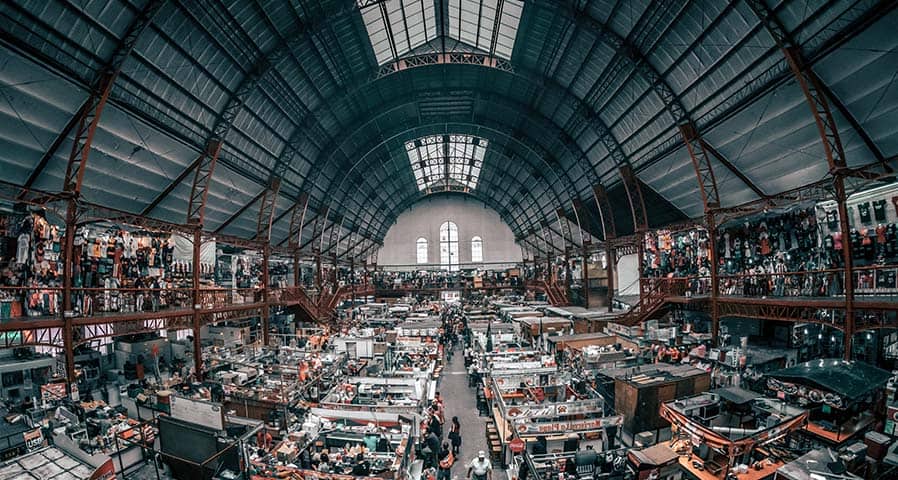Daylighting Controls & Daylight Savings: Optimizing Natural Light Through the…
Studies have shown that natural lighting has proven to improve workplaces by helping employees be more…

Industrial properties have their own set of challenges when it comes to seeking the best lighting solutions. First, they need optimal lighting performance for the expansive areas where employees may often operate heavy machinery or handle sensitive materials. Secondly, they operate for an extensive number of hours and can face high vibrations that require extra durability and a long lifespan.
Upgrading to LEDs is the sensible choice that provides all the qualities warehouses are looking for without sacrificing safety and efficiency. LEDs can even lead to cost savings long-term from conserving additional energy.
Retrofitting industrial spaces isn’t as straightforward as it may seem. Existing mounting hardware, wiring, and spacing can create complications during an upgrade. Additionally, some fixtures may be difficult to reach, especially in high-ceiling areas or restricted zones. Starting with a detailed walkthrough helps identify safety requirements, such as escort protocols and personal protective equipment, and assesses which areas can be upgraded in phases to minimize disruption.
Specific areas like hazardous zones, strip-lit workstations, or exterior walls each demand distinct fixture types. For example, hazardous locations may still rely on HID lamps within enclosed fixtures, which are costly to maintain and inefficient. Upgrading to enclosed LEDs improves both efficiency and compliance.
Hazardous Areas: Older HID fixtures are difficult to maintain and operate inefficiently. LED alternatives offer longer life spans and emit less heat—ideal for tight, high-risk environments.
Strip Channel Fixtures: Frequently used for task lighting, strip fixtures need an accurate wattage assessment. Upgrading 8′ fluorescents with 4′ T8 LED options also opens the door to add accessories like lenses or sensors.
High Bay Enclosed Fixtures: Common in storage and processing areas, high bays equipped with HID lamps lose light quality quickly. LED high bays outperform traditional fixtures in both light output and longevity.
Wall Packs: Often used for exterior lighting, wall packs can be tricky because fixture size doesn’t always indicate wattage. LEDs offer a more reliable and energy-efficient replacement.
Lighting Controls: Areas like storage rooms, breakrooms, and stairwells can benefit from LED lighting controls, including occupancy sensors and daylight harvesting features, to further reduce energy usage.
Industrial LED lighting can reduce energy usage by 50% to 80% compared to fluorescent and HID systems. This efficiency is due to directional illumination, lower wattage requirements, and optional dimming capabilities. For 24/7 operations, this equates to massive utility savings over time.
LEDs last up to 50,000 hours or more, three to five times longer than traditional lighting. This extended life means fewer replacements, especially in high or hazardous areas where maintenance is difficult and expensive. This leads to fewer service interruptions, reduced labor costs, and smaller replacement inventory requirements.
Switching to LEDs leads to a safer workplace for employees. They deliver brighter lighting performance that can be customized to deliver the color temperature, color rendering index, and wattage needed to improve accuracy without creating eye strain and reduce the number of workplace accidents. Since LEDs emit little heat, they even reduce the risk of burns and fire hazards.
Industrial LED lighting supports sustainability initiatives:
LED lighting systems pair with advanced control and smart building management systems to integrate occupancy sensors, daylight harvesting, and remote scheduling software. These lighting controls can be used across the facility to minimize energy usage and optimize lighting in accordance with the time of day.
Examples include:
LED retrofits are more than energy-saving tools engineered for performance and reliability in even the harshest conditions.
Unlike other lighting options, LEDs don’t rely on heating internal gases to emit light. Their modern design allows them to conserve more energy while emitting more light per watt.
Warehouses and industrial properties are prone to lots of vibrations, shocks, dust, and temperature changes. LEDs are built to withstand rugged environments that use heavy machinery like production lines or mechanical rooms.
LED retrofits outperform alternative lighting options with their uniform lighting coverage and customizable color. They emit bright lighting instantly without warm-up time or flickering.
Rated for 50,000 to 60,000 hours, LED retrofits reduce the frequency of replacements and related downtime.
High bay LED fixtures provide even coverage in large open areas, improving inventory visibility and employee navigation.
LED tube lights and panel fixtures enhance visibility on production floors and quality control stations, supporting accurate work.
Vapor-tight LED fixtures handle exposure to humidity, dust, and temperature changes while delivering reliable illumination for loading docks and packing zones.
LED strip lights offer bright, focused lighting for precision work, making them ideal for machinery zones or tool stations.
A successful lighting strategy starts with choosing the right lighting for your specific needs. For an industrial warehouse, LEDs offer customizable features and fixtures to provide optimal lighting to cater to energy, safety, and performance needs.
Action Services Group offers turn-key LED retrofit solutions to meet your lighting goals and budget. Call 610-558-9773, email [email protected], or schedule a consultation that fits your schedule.